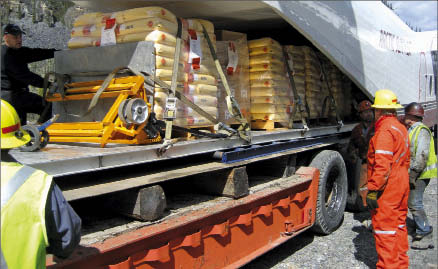Since Canadian Zinc (CZN-T) bought 100% of the Prairie Creek property in the 1990s, the company has invested more than $45 million and quadrupled the mineral resource. It has also advanced the zinc-silver-lead mine in the Northwest Territories through five environmental assessments (EAs) related to applications for land use permits and licences that are required for exploration and development.
In late September Canadian Zinc announced that the Mackenzie Valley Review Board (MVRB) had officially closed the public registry for the project’s EA, which marks the end of public hearings and comment and the submission stages of the EA.
The mining company awaits a decision from MVRB, and, once that is issued, it will be submitted to the federal minister for review. After that review, the last phase of the permitting process will begin, involving the issuance of a water licence and land-use permits by MVRB, which will incorporate recommendations arising out of the EA.
In August the federal government vowed to commit $3 million to train indigenous people for employment at the Prairie Creek mine over three years. In the same month, Canadian Zinc inked a socio-economic agreement with the Northwest Territories government which outlines the methods and procedures by which the two parties will work together to make the most of the mine’s opportunities and minimize the socio-economic impact of operating it.
Canadian Zinc estimates the mine will provide full-time jobs for 220 people once it is in full operation.
The Prairie Creek mine is partially developed with an existing 1,000-tonne-per-day mill and related infrastructure. The mine has measured and indicated resources of 5.84 million tonnes grading 10.71% zinc, 9.90% lead, 0.326% copper and 161 grams silver per tonne. Inferred resources add 5.54 million tonnes grading 13.53% zinc, 11.43% lead, 0.514% copper and 215 grams silver per tonne.
In early October Canadian Zinc reported drill results from its mid-year exploration program. The company says it found a new area of strata-bound mineralization that was intersected within 150 metres of existing underground workings and multiple new vein intercepts intersected above the mineral resource.
Hole 190 cut a new area of strata-bound-type mineralization 150 metres below the 870-metre mine level, which is the lowest level of developed workings at the Prairie Creek mine. The drill hole returned 3 metres of 1.61% lead, 7.15% zinc and 12 grams silver per tonne and 3 metres of 3.56% lead, 8.84% zinc and 26 grams silver.
A series of 25-metre-spaced holes targeting the upper-level vein area – close to surface and above the presently defined vein resource – returned an 8-metre interval grading 8.78% lead, 5.07% zinc, 138 grams silver and 0.258% copper in hole 196, while hole 193 cut 2 metres of 7.34% lead, 8.70% zinc, 263 grams silver and 0.650% copper. Other notable intersections were 4 metres of 5.16% lead, 6.09% zinc, 59 grams silver and 0.069% copper in drill hole 194 and 5 metres of 3.71% lead, 8.38% zinc, 54 grams silver and 0.183% copper in hole 192.
At presstime Canadian Zinc traded at 65¢ per share within a 52-week range of 52¢-$1.56. The junior has 130.82 million shares outstanding.


Be the first to comment on "Perseverance is the watchword at Canadian Zinc"